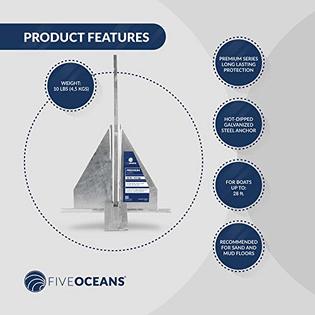Fluke Style Anchor - Questions
Wiki Article
Indicators on Fluke Style Anchor You Need To Know
Table of ContentsThe Of Fluke Style AnchorGet This Report on Fluke Style AnchorExcitement About Fluke Style AnchorFluke Style Anchor Fundamentals Explained
Claw anchors are simpler to set, less likely to foul, as well as easier to reset if they drag. However, they do not give as much holding power as a fluke-style anchor. Plow-style supports are one of the most common kind of support used on tiny to medium-sized boats. They are simple to release as well as get as well as provide excellent holding power in most problems.They are more effective at setting in soft bottoms, and they have a greater holding power-to-weight proportion. Mushroom supports are the largest as well as heaviest kind of support, as well as they are typically utilized on huge boats or in deep water. They have the greatest holding power of any type of kind of anchor, however they can be challenging to release and recover.
It is created to permeate the sea floor and also supply a safe hold for your watercraft. Fluke supports are normally made of premium materials such as galvanized steel and are build to last. Fluke support dragging can be an irritating issue for sailors. This sort of dragging happens when the support line comes to be twisted around the support's flukes, avoiding it from establishing properly.
This tool connects to the support line and also stops it from twisting. Another choice is to use a longer anchor line. This will certainly provide the anchor much more area to set appropriately and will certainly minimize the opportunities of the line ending up being twisted. Examine the rode to make certain it is not fouled or entangled.
The Fluke Style Anchor Diaries
Inspect the anchor itself to see if it is harmed or if the flukes are not dug in correctly. If so, attempt resetting the anchor. Finally, if all else stops working, you can attempt moving the boat to a various place.This design permits an appropriate setup no matter the angle the support lands. When selecting your following support see us below at Wholesale Marine. We supply a firm structure of skilled customer support representatives to help you as you peruse our products. Our cost match warranty, same-day delivery, as well as totally free delivery for carts over $99 are all cherries on top of our high-quality merchandise.
By Tom Worry, Last updated: 5/28/2020 Anchor rodes contain a length of chain, rope or a combination of rope and also chain that connects a support to a watercraft. The rope section of support rodes generally includes nylon three-strand, 12-strand or double-braid line. Nylon is the product of option, since it is elastic and able to absorb the shock loads came across when securing - Fluke Style Anchor.
Numerous small boats utilize support rodes made completely of three-strand nylon line. This is since all-rope rodes are light-weight, economical as well as much easier to store than rope-chain website here or all-chain rodes. All-rope rodes can be rather strong, they do not have the chafe resistance of chain and also are as a result not suitable for securing near coral, among rocks or in anchorages with great deals of rise as well as wave activity.
How Fluke Style Anchor can Save You Time, Stress, and Money.

This reduces the demand for lengthy range (except in shallow water) since the chain is heavy as well as pushes the bottom until severe problems are encountered, when even more extent might be needed. Given that chain has extremely little elasticity, treatment needs to be taken to stop the chain from ending up being "bar limited" in high winds by using a snubber constructed from nylon line.
Quality 43, called G4 or HT; made from high-carbon steel. G4 is the preferred chain for anchoring or windlass applications, and also has twice the working tons of BBB chain, so you can utilize a smaller dimension with the exact same toughness.
BBB or "Three-way B" has an uniform pitch brief web link, as well as works well on windlass gypsies. BBB used to be the most prominent type for windlass styles of the past, however has been replaced by G4. Evidence Coil does not have a consistent pitch and does not deal with support windlasses.
About Fluke Style Anchor
Little galvanized shackles connect the support to the size of chain, and attach the top article chain to the thimble on the support line. Fluke Style Anchor. Keep in mind to utilize the "following dimension up" in shackles; a size of 1/4" chain would be matched to a 5/16" shackle. This system, with a lengthy length of three-strand nylon line, a moderate size of chain as well as an appropriately sized support will satisfy the demands of most of boaters, with watercrafts as much as the 30' dimension variety.
High-strength chain like these allows you to decrease a dimension which minimizes the chain's weight by regarding 30%, while achieving the exact same workload ability and also ultimate toughness. Matching support chain to a specific vessel can be difficult, given that the windage of the vessel is probably the essential selection factor, as well as windage is hard to figure out.
Report this wiki page